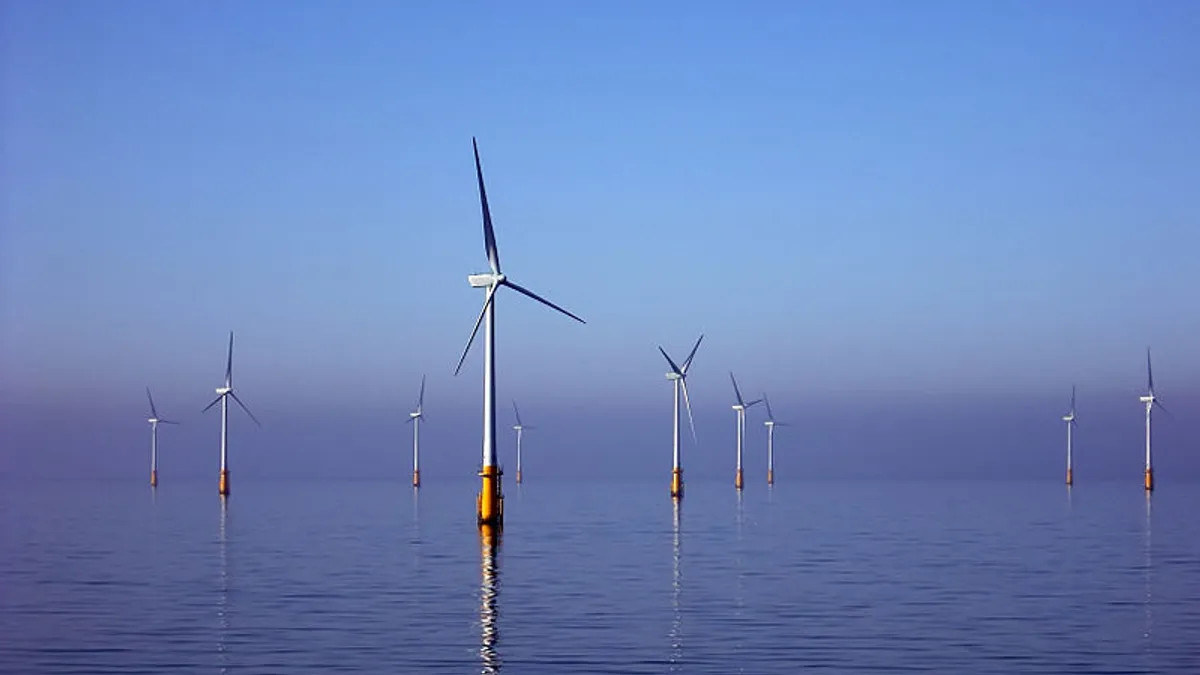Dive Brief:
- The Interior Department plans to issue two proposed rules this month for offshore wind, expected to streamline permitting requirements and to eliminate unsolicited leasing on the outer continental shelf.
- The Bureau of Ocean Energy Management (BOEM) is considering regulatory reforms to "expeditiously facilitate offshore renewable energy development in a manner that is safe, environmentally sound, and that provides fair return to U.S. taxpayers," according to the Trump administration's Spring Regulatory Agenda. Regulators are also considering whether to alter a leasing practice through which third parties can propose a bid for an area that has not already been the subject of a solicitation by a federal agency, according to the agenda.
- The rules would BOEM expects the rules to be effective by the end of the year or January 2021. The timing would coincide with a highly anticipated final decision from BOEM on the first large-scale offshore wind project in federal waters: Vineyard Wind.
Dive Insight:
States along the East Coast have issued ambitious goals for offshore wind, and industry stakeholders, including prospective developers, have urged BOEM for more federal leasing opportunities.
BOEM identified "deregulatory opportunities" on offshore wind developments, that will add more flexibility to geophysical and geothechnical survey submission requirements, streamlining approval of meteorological buoys, revising project verification procedures, and providing "greater clarity regarding safety requirements." The Trump administration is pushing deregulation and streamlined permitting as a general approach for energy and other projects.
"This latest process announcement from BOEM offers some long-term hope for improvement, but the time is now; the federal government can’t wait or delay using its existing tools to spur economic investment," Noah Shaw, partner at Hodgson Russ and former general counsel at the New York State Energy Research and Development Authority (NYSERDA), told Utility Dive.
"Of course, the proof will be in the pudding as this process moves along, as to whether BOEM can deliver on the promise of improvement," he said.
The practice of unsolicited lease requests has served to inform BOEM of interest in offshore leasing, but the continued interest in leasing activity has become well-established. While stakeholders await the notices of proposed rulemakings, state energy officials are also keen on more federal leasing areas.
"We've been extremely clear with the federal government for a number of years about the need for new lease areas that could serve New York, and now the broader region ... as other goals have also shifted," Doreen Harris, Acting President and CEO of NYSERDA, told Utility Dive.
NYSERDA is progressing with its second offshore wind solicitation notwithstanding any earlier implications from the COVID-19 pandemic earlier in 2020. The agency is working "to maintain the market momentum" established in the state's first solicitation for a total 1.7 GW of offshore wind in 2019, she said. "We need to continue our work and we need BOEM to continue their leasing and permitting."
New York does not need additional federal leasing for its upcoming 2.5 GW offshore wind solicitation, according to Harris, but federal action is needed to assure the industry's future growth.
BOEM will host two webinars on Tuesday and Thursday on its new Supplemental Environmental Impact Statement for the 800 MW Massachusetts offshore wind project, Vineyard Wind.
"The fact that BOEM has made the progress that they did [on Vineyard Wind] is encouraging on its surface," Harris said of the 420-page filing.














